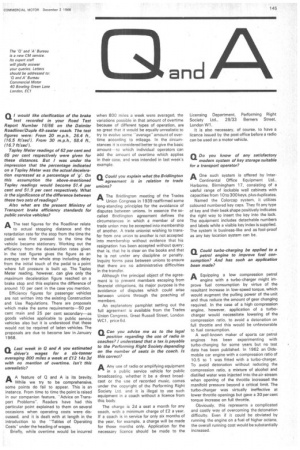0 . I would like clarification of the brake test recorded
Page 147

If you've noticed an error in this article please click here to report it so we can fix it.
in your Road Test Report Number 16/66 on the Daimler Roadliner/Duple 49-seater coach. The test figures were: From 20 m.p.h., 26.4 ft., (16.5 ftlsec2). From 30 m.p.h., 58.4 ft., (16.7 ft/see).
Tapley Meter readings of 62 per cent and 65 per cent respectively were given for these distances. But I was under the impression that the percentage indicated on a Tapley Meter was the actual deceleration expressed as a percentage of 'g'. On this assumption the above-mentioned Tapley readings would become 51.4 per cent and 51.9 per cent respectively. What is the significance of the difference between these two sets of readings?
Also what are the present Ministry of Transport brake efficiency standards for public service vehicles?
AThe test figures for the Roadliner relate
to actual stopping distance and the retardation rate for the stop from the time the pedal was first pressed to the time the vehicle became stationary. Working out the efficiency from the deceleration rates given in the test figures gives the figure as an average over the whole stop including delay from the initial touch of the pedal to a point where full pressure is built up. The Tapley Meter reading, however, can give only the maximum deceleration figure reached on a brake stop and this explains the difference of around 10 per cent in the case you mention.
Efficiency figures for passenger vehicles are not written into the existing Construction and Use Regulations. There are proposals which make the same requirements-50 per cent main and 25 per cent secondary—as goods vehicles applicable to public service vehicles also but it is understood that these would not be required of laden vehicles. The proposals are due to become law in January 1968.
































































































































































































